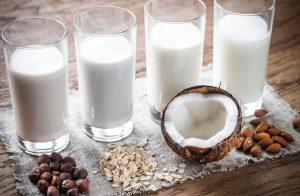Today’s milk is a processed food. Until the end of the 19th century in Europe and the beginning of the 20th century in the US, milk was consumed unpasteurized or raw. Later on, homogenization became the industry’s standard. These processes further alter milk’s chemistry and actually increase its detrimental acidifying effects.
Under current industrial methods, cow’s milk is often a toxic brew of man-made ingredients like bio-engineered hormones, antibiotics (55% of U.S. antibiotics are fed to livestock), and pesticides—all of which are bad for us and the environment. For example, unintentional pesticide poisonings kill an estimated 355,000 people globally each year. In addition the drugs pumped into livestock often re-visit us in our water supply.
We are the only animals on the planet who take another animals milk and drink it for consumption. We are biologically designed to drink our own mother’s milk. Would you go and put your mouth to a cow’s nipple and start drinking it? It’s not a naturally occurring desire in my mind.
The biochemical make-up of cow’s milk is perfectly suited to turn a 65-pound new born calf into a 400-pound cow in one year. It contains, for example, three times more protein and seven times more mineral content while human milk has 10 times as much essential fatty acids, three times as much selenium and half the calcium. Some may like cow’s milk but drinking it is both unnecessary and potentially harmful.
Despite popular opinion, recent studies and exposes have shown that dairy can actually create osteoporosis in our bones. Not only do we barely absorb the calcium in cow’s milk (especially if pasteurized), but to make matters worse, it actually increases calcium loss from the bones. This increases your risk for fractures and more.
Many of the animals today are factory farmed and abused. Those are just a few of the reasons why milk isn’t the most optimal of foods for our bodies. But remember that it doesn’t stop there. Milk is found in cheeses, yogurt, non-vegan ice creams, whey protein, whipped creams and any type of dairy product.
Check out next weeks blog post to learn about the large selection of milk alternatives and why there better for you.
🙂

